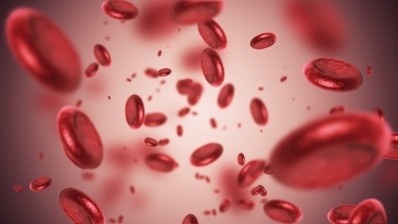Promotional Features
Omega-3 experts and BASF agree category will benefit from new focus in innovation and marketing
Omega-3 experts and BASF agree category will benefit from new focus in innovation and marketing
- Latest science supports paradigm shift to omega-3 uptake and absorption
- Brand marketers encouraged to drive usage with absorption-based products and communicating superior absorption benefits
For well over a decade, potency has dominated clinical trial design, product launches and marketing claims, but still there remains a global omega-3 deficiency. In the USA, for example, approximately 60% of consumers are aware that including omega-3 supplements in their diet could benefit them, yet usage is estimated at only 20%1.
Furthermore, while the global omega-3 supplements category has grown at low single digits from 2012-2017, it lags behind other VDS categories such as probiotics, vitamin D and protein supplements, all enjoying significantly higher growth rates in the same period2. A conclusion is these categories have more successfully convinced consumers with innovation and marketing strategies to include these supplements in their daily dietary regime. Undoubtedly, there are some winning strategies the omega-3 category could learn from.
Leading industry experts agree with BASF that to stimulate faster growth in the omega-3 category, fundamental changes are required. Firstly, to ensure marketing claims are science-based, supported by correctly constructed studies. Secondly, to bring to market superior products with credible and appealing consumer benefits. Thirdly, to communicate these benefits effectively both to consumers and recommenders, converting awareness into regular purchases.
Leading omega-3 academic Professor Philip Calder is one who believes omega-3 clinical research design should be reconsidered: “Given the many applications fatty acids have, we need to make sure that evidence is more robust.” He continues to talk about bioavailability as a marketing strategy: “I prefer to talk about enrichment of blood, cells and tissue with EPA and DHA. Certainly, this is an opportunity for industry because it might enable people to get delivery of omega-3s with greater enrichment from a particular dose; or it might provide a means to deliver omega-3 fatty acids to people who have problems with digestion or absorption or with some other aspect of gastrointestinal function.”
On the commercial side, Adam Ismail, former Executive Director of GOED, sees benefit-led claims communication as a long term industry opportunity. “If we want to make products consumers put in their mouths every day, they have to trust these products and the companies they buy them from. Claims are one way to do that, so we need to be better marketers of these types of claims in order to retain consumer trust.''
Click here to watch Adam Ishmail talking with BASF about benefit-led claims communication as a long term industry opportunity.
BASF, with over 100 years’ experience in omega-3 science and innovation, has concluded that prevalent potency benefits and claims are not enough to deliver what consumers want and need. Latest BASF scientific learning suggests EPA and DHA fatty acids must be absorbed into our body much more efficiently than most in-market supplements currently achieve, otherwise they will be wasted.
This perspective is supported by BASF consumer research which points to omega-3 absorption as a market-ready opportunity. Quantitative testing has indicated the high potential of absorption-based concepts to influence purchase intent among existing category consumers, and encouragingly, also lapsed and new consumers.
Chris Howell, Category Lead Omega-3 Nutrition says: “Our mission is to help people live longer and stronger and we know omega-3s are scientifically proven to make a genuine difference. It’s frustrating with many current omega-3 supplements that consumers likely won’t get the claimed benefits, which they could if their supplements were properly absorbed. Our research across multiple markets revealed consumers easily understand the concept of absorption, and find the idea of getting more omega-3 to where it’s needed particularly motivating. It’s not so surprising, considering many other categories claim added benefits based on superior product functionality, thanks to additional technology that makes the original product better. This combination of new scientific and consumer insights encouraged BASF to focus innovation activities on omega-3 absorption, and led directly to the development of Accelon™.”
Data from two single dose crossover studies show BASF’s new Accelon™ delivers a minimum of four times better absorption of omega-3 on an empty stomach in comparison to the same omega-3 oils without Accelon™ technology. The result is higher delivery of EPA and DHA to cells throughout the body. Even if taken with food, Accelon™ absorption is still 30% greater than with other omega-3s.
Øyvind Ihle, Head of Omega-3 Nutrition adds: “For brand owners, Accelon™ technology and absorption benefits are an omega-3 supplements’ game changer. A validated opportunity to invest in today and leverage through innovation and marketing for the foreseeable future. We strongly believe this is how omega-3 brands will drive consumer usage and return the category to the levels of growth currently enjoyed by other supplements.”
Click here to wartch Øyvind Ihle, Head of Omega-3 Nutrition discuss why Accelon™ technology and absorption benefits are an omega-3 supplements’ game changer.
- Nielsen BASES USA, Feb 2014
- Euromonitor: 2017 Global Vitamins and Dietary Supplements (€CAGR 2012-2017: Omega-3 +2%, Probiotics +10.2%, Vitamin D +7.4%, Protein + 5.8%)



